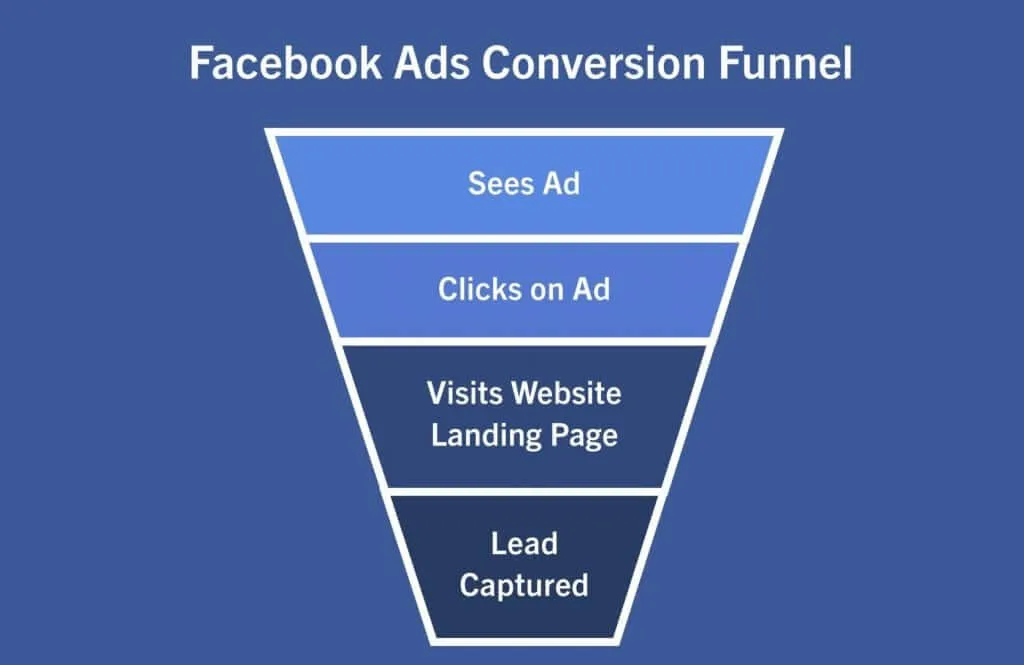B2B Facebook Ads: Key Tips for the Ideal Converting Ads

Facebook is still going strong for B2B marketing. 58% of the managers reportedly identify Facebook, alongside LinkedIn, as number one social media platform based on ROI for the B2B sector. This is supported by cases of amazing success stories of B2B companies reaching impressive results via Facebook ads.
Why Facebook Ads for B2B?
- Widely Adopted. Nine out of ten B2B marketers use Facebook. So the platform is taken very seriously for the B2B marketing mix.
- Large User Base. Facebook has more than 2.9 billion monthly active users. It makes it a suitable platform to find the business stakeholders you need from different walks of life.
- Active Business Presence. About 93% of businesses are actively on Facebook. They use advanced targeting to reach specific demographics, interests, and job titles.
- Targeting Capabilities. The high-level targeting that Facebook offers allows the B2B advertisers to target very specific businesses and organizations, as well as main decision-makers in their respective industry domains.
- Proven Effectiveness. Famous B2B companies, such as Hootsuite, Sage, and Xero, have already proven the effectiveness of using Facebook in order to achieve their marketing objectives.
Overcoming Misconceptions of Facebook Ads for B2B
Besides proven success, Facebook Ads for B2B is one of those marketing tools that most B2B teams would overlook. Perhaps because Facebook seems to be tailored to be mostly a B2C platform. Still, the high ROI evidenced by its use in B2B marketing shows it to be of strategic importance and, therefore, gives it a rightful place in the B2B advertising arsenal.
Understanding Your Target Audience
Outline Your Core B2B Audience
- Create a General Audience. Select a broad audience aimed at tapping into a wider spectrum of all possible B2B clients. Further segment down this group by job titles, industry specifics, and behaviors through Facebook's audience tools.
- Custom and Lookalike Audiences. Use your already existing customer data or visitor analytics on your website to define custom audiences. It helps in reaching out and retargeting the prospects who are similar to your customers. This increases the probability of conversion.
- Audience Segmentation (by Job Seniority and Industry). Job seniority and industry type in B2B create a diversification of your audience. Custom tailor your ad content and strategies of conversion according to the unique needs and professional level of your audience.
Advanced Targeting Tools
- First-Party Data. This is a data type you will want to use to really refine who you are going after, since this will be the people who have clearly shown interest in your product or service. This is bound to bring about better ad targeting precision and better ROI on the ad spend.
- Exclusion Tactics. Use exclusion parameters, so your ads aren't displayed to irrelevant segments; it saves your budget while increasing effectiveness.
- Targeting High-Value Leads. This further strengthens high-value leads using targeting strategies. This leads to advertising spend being used for leads with the highest conversion potential.

Image source: Brandastic
Tools and Data for Precision
- MetaMatch® and SiteAdapt™. Employ tools like MetaMatch® for creating advertising audiences using multiple data sources, and SiteAdapt™ for delivering personalized experiences to every website visitor. These tools increase the audience match rate and personalize user experience.
- Campaign Tools. You can use tools like Campaign Experimentation for testing at scale and Revenue Optimization to adjust campaigns for direct impact on driving revenues.
- Web Personalization and Lead Enrichment. Drive user engagement on your website through advanced targeted personalization. Further, enrich leads with verified business data to achieve better campaign effectiveness.
Ongoing Monitoring and Adjustment
- Understand Changing Needs. Ensure that your strategies are flexible and that you continue to research in line with the changing needs and tastes of the target market. Being proactive toward this end will enable you to remain relevant and, at the same time, be effective in your B2B Facebook ad campaigns.
- Competitor and Industry Analysis. Regular competitor and industry analyses offer an understanding of market dynamics, which may guide the refocusing of your targeting.
Make your First Facebook B2B Ad
Following this process below will enable you to craft efficient B2B Facebook Ads, designed to achieve specific business goals and the needs of the target audiences. And, ultimately, achieve your marketing goals.
1. Define campaign goals and objectives, target group identification
- Identify Your Objectives. Make sure that your campaign goals are aligned with business outcomes, such as brand awareness, generation of traffic, or conversion of leads.
- Define Your Target Audience. Use Facebook's detailed targeting to define interests, job titles, and behaviors in sync with those that can be defined in the personas you have set.
2. Choose Ad Types and Ad Placements
- Select Ad Formats. Choose from image, video, or lead ads based on your campaign goal.
- Ad Placement Strategy. Select Automatic Placements, so that Facebook is able to optimize ad placements where your ads will be best viewed.
3. Utilize Advanced Targeting Features
- Custom and Lookalike Audiences. Reach people who are like your customers or who have been in touch with your product.
- High-value lead targeting. Focus on those prospects who will be converted by using rich demographic and behavioral data.
4. Configuration and Refinement Aids
- Facebook Pixel Installation. You may embed a Facebook Pixel in your website to measure and optimize the activities users take.
- Ad Set Configuration. Total control of your budget, schedule, and who you are targeting at the ad set level with daily or lifetime budgets.
5. Launch and Monitor Your Ad
- Campaign Set-Up. Name your campaign so that it clearly identifies your target audience, or any specific offers if applicable.
- Dynamic Ad Testing. With Dynamic ads, test different ad creatives and optimize them based on performance data.
6. Capture and Engagement of the Leads
- Instant Forms. Use Facebook's native lead forms to make the information submission easier for users.
- Optimization. Increase the number of steps in your forms to add engagement from the user. This will reduce form submissions by unqualified leads.
Optimizing Facebook Ads Content for B2B Audiences
Pro Tips for Effective B2B Advertisement Content Strategy
Implement these strategies so you can optimize your most highly B2B Facebook ads that capture attention and drive meaningful business results:
Engaging with Video
There is an order of magnitude better engagement in posts with videos than in those with mere links, which makes video content imperative in your B2B Facebook ads strategy. Make sure your videos are brief enough and their content can be appreciated should the user watch without sound, especially on mobile.
Targeting Specific Audiences
B2B Facebook Ads offer a number of advanced targeting options. Aim to target specific industries, job titles, and behaviors for much greater relevance in your ads.
Optimizing Your Funnel
Since this is a critical point in the B2B buying cycle, the ads should optimize toward clicks and conversions. Lead magnets like an eBook or webinar work best to give potential buyers an incentive to engage, hence sharing contact information in return.
Narrow Down Your Audience
Narrow down to a smaller but highly active group of users. This way, you'll be able to make sure that your ad spend is optimized and give more returns from an overall campaign.
Type of Advertisement
Use the right type of ad: image, video, carousel, or instant experience. This is critical to get noticed and foster response within your audience.
Optimization for Mobile
Your campaign content should be optimized for mobile, since a big percentage of traffic comes from mobile. This will mean short, snappy ad copy, videos that work without sound, and landing pages that are mobile-friendly.
A/B Testing
Continuously test your ad creatives and ad copy to find the ones that prove very effective. Run tests on a lot of different versions of the ads using Facebook's Experiments tool on elements such as visuals and persuasive ad copy.
Lead Capture Techniques
Create strategies like quizzes or animated videos to make the capture of effective leads. For instance, quizzes help to capture the attention and information of the users, while animated videos drive traffic to downloadable content.
Tracking Conversions
Track what your users are doing on your site using the Facebook pixel. This would, in turn, add great value to your insight into the audience and optimize the ad campaigns for increased conversions.
Value Proposition
Always tailor the content of the ad so that it communicates immediate value for the viewer. This approach might get you a higher relevance score and tends to do better in general.
B2B Campaign Budget Setting and Bidding
By using the strategies below you get to fully utilize the Facebook's features and your budget. You will bid effectively while realizing the best returns on your B2B Facebook ad spend.
Budgeting Options
- Daily vs Lifetime Budget. A daily budget enables you to set the average amount of money to be spent in a day, while you also can set the total amount that you would like to spend for the whole period of running the campaign. This provides great flexibility, as you can manage expenditures with the length of your campaign and the expected results.
- Budget Allocation. You can enter the budget for your campaign, and Meta Advantage will distribute this budget among the best-performing advertisement sets to maximize the result with an optimized spend.
Bidding Strategies
- Select a Bid Strategy. Facebook offers various types of bidding strategies. It includes lowest cost with no cap, target cost, and bid cap. Whatever you settle on will, of course, depend on what the objectives of your campaign are, the competition, and your audience.
- Spend-based, Goal-based, and Manual Bidding Options. Choose spend-based, goal-based, and manual bidding options, respectively, and further fine-tune your strategy based on your campaign's goals and your budget constraints.
Conversion Tracking and Budget Optimization
Effective Use of Conversion Tracking. Conversion tracking lets you put more of your budget behind advertisements that bring a return and less into weaker areas. This way, your budget will be well spent and invested in a better return on investment.
Manage your Budget. Stay focused and keep it effective by not spreading the budget too thin among multiple ad sets and campaigns. Consider setting a daily budget per ad set with the formula (CPA * 50) / 7 to balance reach and cost. We also advise checking our blog on 7 mistakes that are wasting your advertising budget.
Techniques for Better Budget Planning
- Cost Caps and CPA Goals. Apply the Cost Caps or add a Target CPA in your campaign settings so that the spend on it is constrained. If the determined CPA isn't achievable, Facebook will place a leash on spending to ensure the budget isn't wasted. You can start with a Target CPA that is slightly inflated by 15-20% of your real goal. Adjust after 4–7 days, depending on the change in performance.
- Dynamic Budget Adjustment. Increase the daily budget, taking into account that there are days when the demand is higher than usual. If the target budget is consistently reaching the set daily budget, increase the daily budget. Reduce the cost limit according to performance against the CPA goal.
Control of Budget and Placement
- Automatic vs. Manual Placements. You have the option to use automatic placements, in which Facebook's system will automatically distribute your budget across the various placements, or manual placements. Like this, you have control over exactly where your ads will appear.
- CBO vs. Ad Set Level Budget. Choose to run a Campaign Budget Optimization and control your budget from the ad set level. CBO lets Facebook distribute your budget among your ad sets. Ad set–level budgeting, on the other hand, gives you more control on that end.
Measuring and Analyzing Ad Performance
With these metrics in place and advanced tools, B2B Facebook Ad campaigns can be measured and optimized for better performance and greater ROI.
Success Metrics of Facebook B2B Ad
Group One. Results Metrics
Results: The total number of times the campaign has successfully delivered the intended results.
Cost per Result: The cost for each intended result or action.
Conversion Rate: The percentage of desired results compared to the total impressions realized.
Group Two. Spending & Returns
Spend: This is the total amount of money spent on the advertisements within a given period of time.
ROAS (Return on Ad Spend): The revenue you make per each $1 you've spent on ads.
Group Three. Engagement and Reach
Impressions: The total number of views an ad had.
Reach: The number of people the advertisement reaches.
Clicks: The number of times ad links are clicked in total.
CTR: The ratio of how often people who see an ad end up clicking on it.
Post Engagement: The total number of reactions, shares, comments, and clicks.
Reporting and Tracking Tools
Use automated client reporting platforms to leverage all Facebook Ads metrics in one place, and save time with this activity.
Also, integrating Facebook Ads metrics with other campaign data allows for a comprehensive view of overall performance, which aids in better strategic decisions.
Monitoring and Fine-Tuning Your Strategy
You can track how the ads perform at a specific frequency using the Ads Manager while viewing the required time periods and analyzing data for campaigns, ad sets, or ads. This will help you identify the trends and make sure adjustments are done as quickly as possible.
Monitor key metrics such as CPC, CPM, CPA, CPR, CTR, and conversion rate to gauge the effectiveness of various elements of your Facebook B2B campaigns.
How can I ensure that my Facebook Ads are targeting in the right way, proving effective, and driving conversions?
Have a clear and succinct single call to action in your Facebook ad that converts. Your ad must speak to one particular objective: brand awareness, lead generation, or selling. A clear CTA tells Facebook users what their next course of action should be, making it easy for them to know how to interact with your ad.
How to boost my Facebook Ad Conversion Rate?
Consider these 8 strategic tips to boost your Facebook ad conversions:
- Define your conversion event; clearly define the action you want the user to take.
- Always keep in mind the destination of the user in the design of the ad.
- Develop some catchy illustrations.
- Keep it brief and to the point.
- Add a catchy call to action.
- Broaden your audience to include more potential customers.
- Make your ads human — optimize them specifically for conversions.
- Pick the ad format that fits your needs better.
What are the best practices for writing Facebook ad copy that converts?
Create an exciting, punchy Facebook ad copy. Use a lot of exclamation marks. Use the most engaging visuals and pair them with your ad copy to let your product explain itself in these moments. Make sure your offer resonates with your demographic.
Do Facebook ads really work for B2B marketing?
For sure, B2B marketing can be effective on Facebook with Facebook ads. It sounds a bit strange, but when you do B2B marketing on Facebook, you engage with potential customers more than ever. Although doing B2B marketing on Facebook might be a little amiss, remember, the nature of transactions in a B2B setup is in general a little bit longer than in a B2C one. So, your approach should focus more on building brand awareness and nurturing leads over time.
Takeaways
While B2B Facebook Ads can offer remarkable ROI, they are indeed quite challenging. However, your campaigns have potential for greatness, and they can convert all those golden leads into the all-important conversions you are fighting for. This article has covered audience targeting, ad content optimization, and budgeting and bidding tactics within the B2B marketing landscape on Facebook. These practical guidelines will help you unleash the full potential of the platform to connect businesses to the people they most desire to reach.
From creating your first ad to optimizing the results, it's a long and challenging process. Hence, constant change and optimization are required to adapt to the changing dynamics of your audience and the online marketing world. Leveraged with these strategies, you can now harness the full potential of your B2B Facebook audience, driving meaningful engagements and business outcomes.
Do you need help with your B2B Facebook Ads? Contact us, and let's create your success story together!
Are you working in Tech B2B? Check our 7 Winning Facebook Ad Examples for Tech Companies.










.png)

